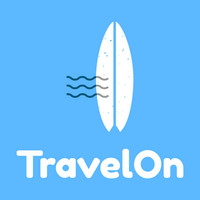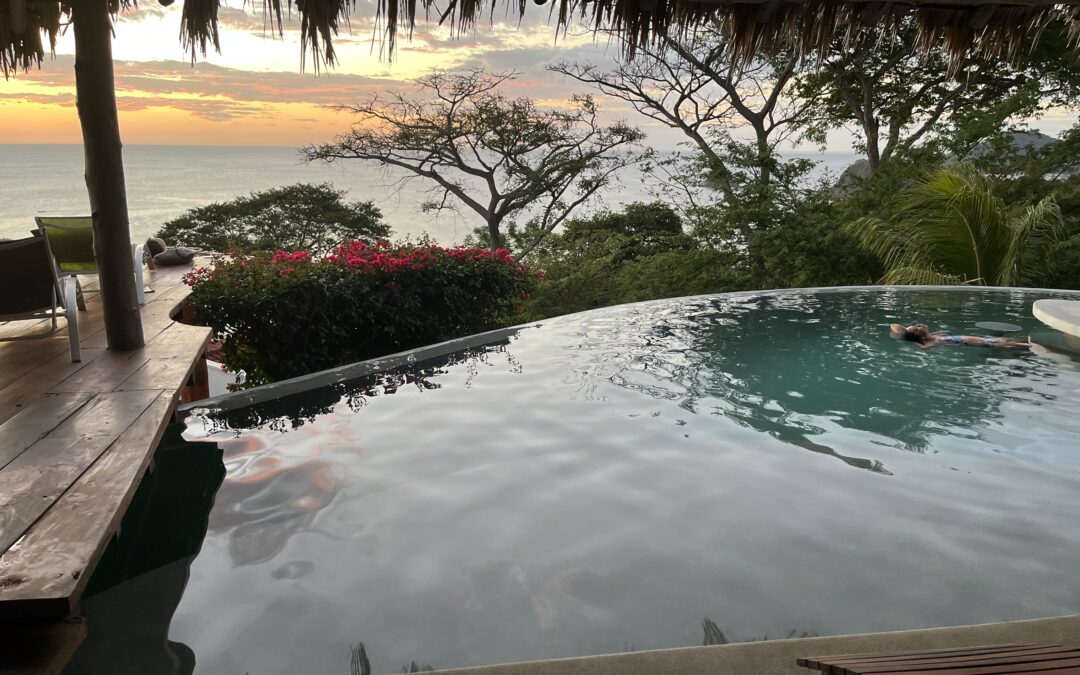Nicaragua with Mark Twain as my Christmas jungle guide
“Tell me, what is it you plan to do with your one wild and precious life?”
Mary Oliver
My mom and dad died. What did I want to do with the rest of my one wild and precious life? Grief travel flung me to Ecuador. I got around the Amazon rainforest by canoe. I explored the Andean highlands’ artisan communities. I cruised the Galápagos Islands on a small ship. I learned to surf in Mompiche. I wandered the narrow steep streets of its capitol’s magnificently preserved colonial core.
Nicaragua came into focus the following winter as I searched for an off ramp from Costa Rica’s high priced tourist trail to join the rising tide of surfers in their 60s and 70s. Pirates and poets. The land of fire and water’s volcanos, lakes and coastlines. Nicarguan people’s juxtaposition of gentle hospitality and revolutionary passion. Volcanos, jungle fringed beaches and warm soft waves grabbed hold of me.
Baby boomers and TV grew up together. As children we ate breakfast with grandfatherly Captain Kangaroo. Clean cut Dick Clark let us tag along and watch the teen agers dance. Walter Cronkite steadfastly guided us through the Viet Nam war, Watergate scandal and the assassinations of President John Kennedy, Senator Robert Kennedy and civil rights leader Martin Luther King.
An unprecedented percentage of us went to college. We studied history and political science. Many of us joined the civil rights movement and Viet Nam protests. We stood with the Nicaraguans protesting the Somoza dictatorship. We authenticated the Rolling Stones benefit concert that raised money and support for Nicaragua’s 1972 earthquake victims. TV and our student magazine subscriptions were our eyes and ears on the ground.
As my cohort dominated American politics and culture, we remained in lock step with our Nicaraguan kindred spirits. We backed the Sandinista revolution and war with the contras. So many US political pilgrims traveled to Nicaragua in support of the Sandinistas that they were dubbed “sandalistas”. We grieved the 2018 protests and crackdown. We encouraged humanitarian assistance for the 2020 Hurricanes Iota and Eta.
The aircraft’s final approach roughly parallels a chain of volcanos and seismic activity that manifests in earthquakes. There is no skyline to show Managua’s face. Its nocturnal light pattern is diminished by gigantic, black Lake Managua, brooding in a crater, separated from the Pacific by a slender, 12-mile passageway.
In 1972 an earthquake laid Managua bare, as Nicaraguans prepared for Christmas. International relief response was swift. Just as rapidly, the Somoza dictatorship diverted the relief funds that flooded into the country to reward cronies and augment its power.
The Rolling Stones became involved because Mick Jagger’s wife Bianca was born in Nicaragua. Mick and Bianca Jagger took a shipment of medicine in a small charter plane into the disaster zone to search for Bianca’s parents whom they located three days later in the city of Leon situated in western Nicaragua.
Bianca Jagger returned to the U.S. and persuaded her husband and the Stones to hold one of the first charity concerts to raise funds for the victims. They raised $280,000 at the Forum in Los Angeles. The regime blocked Bianca’s attempts to establish a small clinic but she persevered in making sure the proceeds went to a charity that the dictatorship did not control.
Pittsburgh Pirates’ right fielder Roberto Clemente excelled at baseball and humanitarianism. Long before 24-hour cable TV exposed Somalia’s starving children; and before Twitter space enabled Egypt’s dictatorship expulsion, Clemente called out the Somoza regime’s cruelty to the world. Clemente personally organized relief efforts and accompanied the cargo plane to deter Somoza’s solders from stealing the relief supplies. The plane crashed immediately after takeoff into the Atlantic Ocean near Puerto Rico, sending shock waves around the world.
Clemente’s memory endures under Managua’s early morning granite and orange-streaked sky. I step out of Sandino International Airport’s terminal escorted by my ground transport driver. The grief and shock are palpable five decades after Clemente’s death. We embark out of a capital with no center, through unmitigated urban blight, along Managua’s active seismic fault lines.
The 82-mile journey lulls me into a car nap until the smooth pavement gives way to rough, unpaved roads. A jarring bump pops my heavy eyes open. Jungle covered hills surrounding a turquoise horseshoe bay come into view. I’m where the first Spaniards entered the region in 1522, in search of the strait between the Atlantic and Pacific oceans. High on the seawall, colossal Christ of the Mercy statue welcomes visitors since 2009, His right hand extended in a blessing.
In the spring of 2018, a controversial social security reform sparked protests. Students opposed to Daniel Ortega’s one-man rule led the march. State security forces and paramilitary crushed them, provoking a crackdown and U.S. State Department travel advisory. The town is hit hard. The expat cliffside building boom is halted. The dirt roads are deteriorated. Backpackers, mostly young and from Europe, are trickling back. Their interests – carousing and outdoor activity are slow starting hostel and restaurant traffic.
Samuel Clemens, more famously known by his pen name, Mark Twain, passed through on his way to take a job on the East Coast. The face of the town appears remarkably unchanged from what the great American adventurer took in when he first laid eyes on it 157 years ago: “A few tumble-down frame shanties — they call them hotels — nestling among green verdure and overshadowed by picturesque little hills.”
“I am wild with impatience to move—move—Move!” Twain wrote to his mother in 1867. “My mind gives me peace only in excitement and restless moving from place to place. I wish I never had to stop anywhere.” Twain was bigger than life; massive in talent, adventurous and well matched for Nicaragua’s raw beauty around each turn of its precarious dirt roads.
Twain is my Christmas Eve jungle guide. The path that bestowed his rich travel writing leads to Dreamsea village. Circular white canvas huts with toasty brown thatched roofs huddle in the tropical forest. A massive woven bamboo pavilion curves majestically over the village depicting a delicate balance of rawness and elegance. The pavilion interior simulates a walk through a woodland, with sandy bamboo trunks rising skyward and filtering the daylight similar to a jungle canopy. The concierge desk faces the entrance anchoring the open space from the center. Bar and pub tables face the canvas huts. A hammock, sofa and lounge chair seating layout along the perimeter bonds new acquaintances. Steep winding stairs ascend to a yoga platform nestled in tropical foliage that quarter scurrying monkeys and screeching parrots.
All new guests are presented with a tropical smoothie that boosts my sleep deprived brain’s dopamine level. I happily doze in my private bush hut, breathing through the lungs of the jungle. The late orange sun from the West converges with my circadian clock and oh so gently beckons me out of my cocoon.
Friendly staff dish up Christmas Eve dinner of crispy gold roasted chicken stuffed with just picked vegetables. Newfound kinship feasts around a soft-lit tabletop beneath a night sky full of treasures.
By morning we’re a surfer community shoehorned into ramshackle pickups pounding along bumpy dirt roadways. Unfamiliar companions pass fruit, sleeves of sandwich cookies and tiny golden Rosquilla rings from roadside stands.
Surf camps are great for solo travelers. Common dining and community driven activity cater to being social. If you love yoga, you’re covered. If you aren’t a true believer, don’t fight it. If you are an introvert, it won’t be awkward for long, as the immersive experience pulls you in. You are set up to meet new friends where most of them, if not all are stoked surfers.
Nicaragua’s southwest coast lies along a land belt between the Pacific Ocean and two massive in-land lakes. The sheer scale of the lakes creates a vacuum that sucks the air all the way from the Caribbean side, across the lake and off the Pacific shore. Onshore winds blow from the ocean towards the land, and offshore winds do the opposite, blowing from the land towards the ocean. This subtle difference in the wind direction impacts the way Nicaragua’s renowned off-shore waves break.
Light-sanded, secluded Playa Hermosa is our Christmas Day host. Dark, rugged mountain ridges rise between gleaming waves and cobalt sky. Camp doesn’t start until tomorrow. It’s natural to get anxious. To reduce ocean anxiety there is no substitute for exposure. Some of us are measured while others exuberantly advance into the forceful waves. I wash down beach shack fish with cold, bottled Coca-Cola that burns my nose on the first swig. Nicaragua brewed, cold and malty Toña beer is everywhere along the sun-soaked beach.
Experienced surfers confide it takes an entire season to effectively pop up. This is my second annual surf camp. Good-natured instructors push beginners into waves until we figure it out or quit. I heave myself back on my board each time my instructor commands me to “get up”. Paddling is effortless for an advanced surfer but brutal to under worked shoulder and upper back muscles. I surf four soft waves on the last day of camp. My arms feel like they’ve been snapped out of my shoulder sockets and stuffed back in. I’m euphoric.

